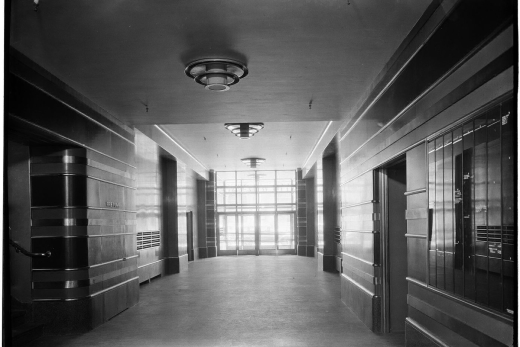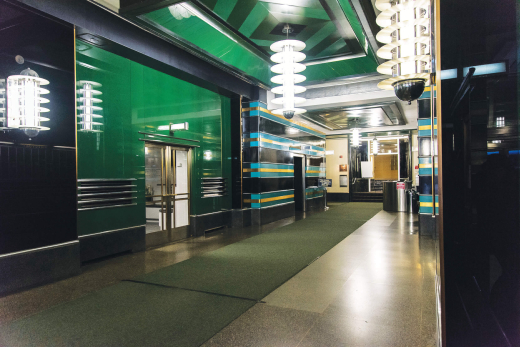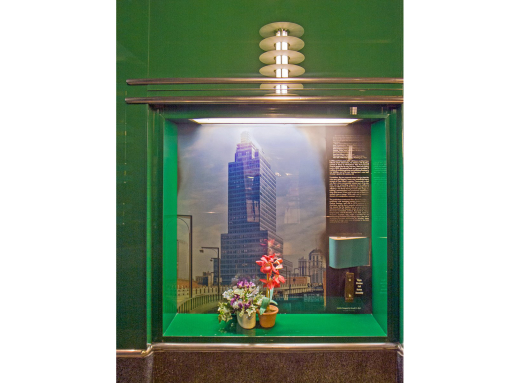In a shocking and frustrating turn of events this week, it was reported that the iconic Streamline Moderne lobby of the McGraw Hill Building in New York City had been completely gutted. The Art Deco-style building, completed in 1931 and designed by Raymond Hood, has been undergoing an extensive exterior renovation.
Although the building's exterior has been landmarked since 1979, the interior lobby was not given similar protections, adding it to a growing list (Philip Johnson's AT&T building, which has been lost, Kevin Roche's 60 Wall Street, which could still be protected) of missed opportunities for the NYC Landmarks Preservation Commission to preserve the city's architecturally significant interior spaces.
The public became aware of potential changes to the lobby at an LPC meeting this past February, which spurred an outpouring of support for interior landmark designation. During this meeting, it seems that a rendering of a health center entrance was mistaken for a rendering of the lobby. According to a curbed.com article, architect Dan Shannon of MdeAS, one of the firms consulting on the project, asserted that it was a preliminary sketch of a ground-floor fitness center next to the lobby, not the lobby itself. He went on to add that the redesign of the lobby “is in progress right now,” and that it would “incorporate some of the original material, and the interior will be influenced by Hood’s design.”
The Art Deco Society launched an online petition and an Request for Evaluation was filed with the LPC to review the lobby for interior designation. Unfortunately, none of these actions can stop the project from proceeding (work can continue until the application has been calendered with the LPC, which can take months), and this week the news broke when local outlet w42st.nyc spoke to NY State Senator Brad Hoylman outside of the building in an interview in which he reported that the building owners told him the lobby had been demolished and also called the Landmarks Preservation Commission “feckless.”
A representative for the project told The Architect's Newspaper that “historic items have been carefully stored as we explore how some of them can be reintegrated into a new lobby design.” The spokesperson further elaborated that the owner plans to include the Hood vestibule banding in the new lobby, and that they have stored the lime green metal wall panels, elevator doors, chrome elevator indicator accessories, terrazzo floor, and blade signs, among other elements. The idea of these items being stored with no plan for their reintegration is a story we have heard before and does not inspire much confidence.
A cultural crime at the McGraw Hill building
Author
Michele Racioppi
Affiliation
Docomomo US staff
Tags
Sources
"Change Is Coming to the McGraw-Hill Building’s Art Deco Lobby. Or Is It? Preservationists sound alarm; architects say they’re not trashing a treasure," curbed.com, February 12, 2021.
"Lobby-ists: Preservationists launch effort to protect a cherished Raymond Hood lobby in Manhattan’s McGraw Hill building," The Architect's Newspaper, February 12, 2021.
"The demolition of the lobby at Manhattan’s McGraw-Hill Building is nearly complete," The Architect's Newspaper, March 11, 2021.



